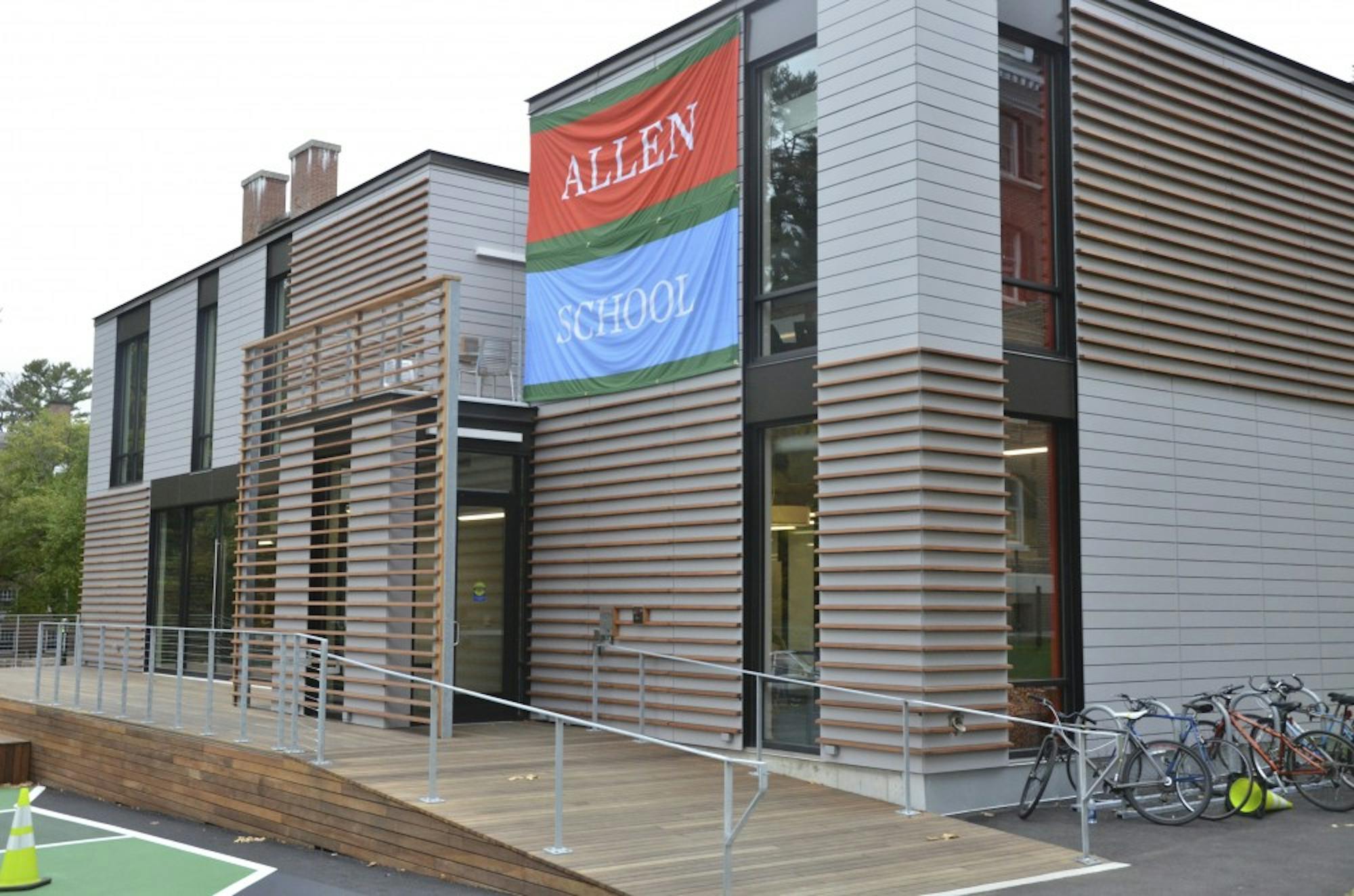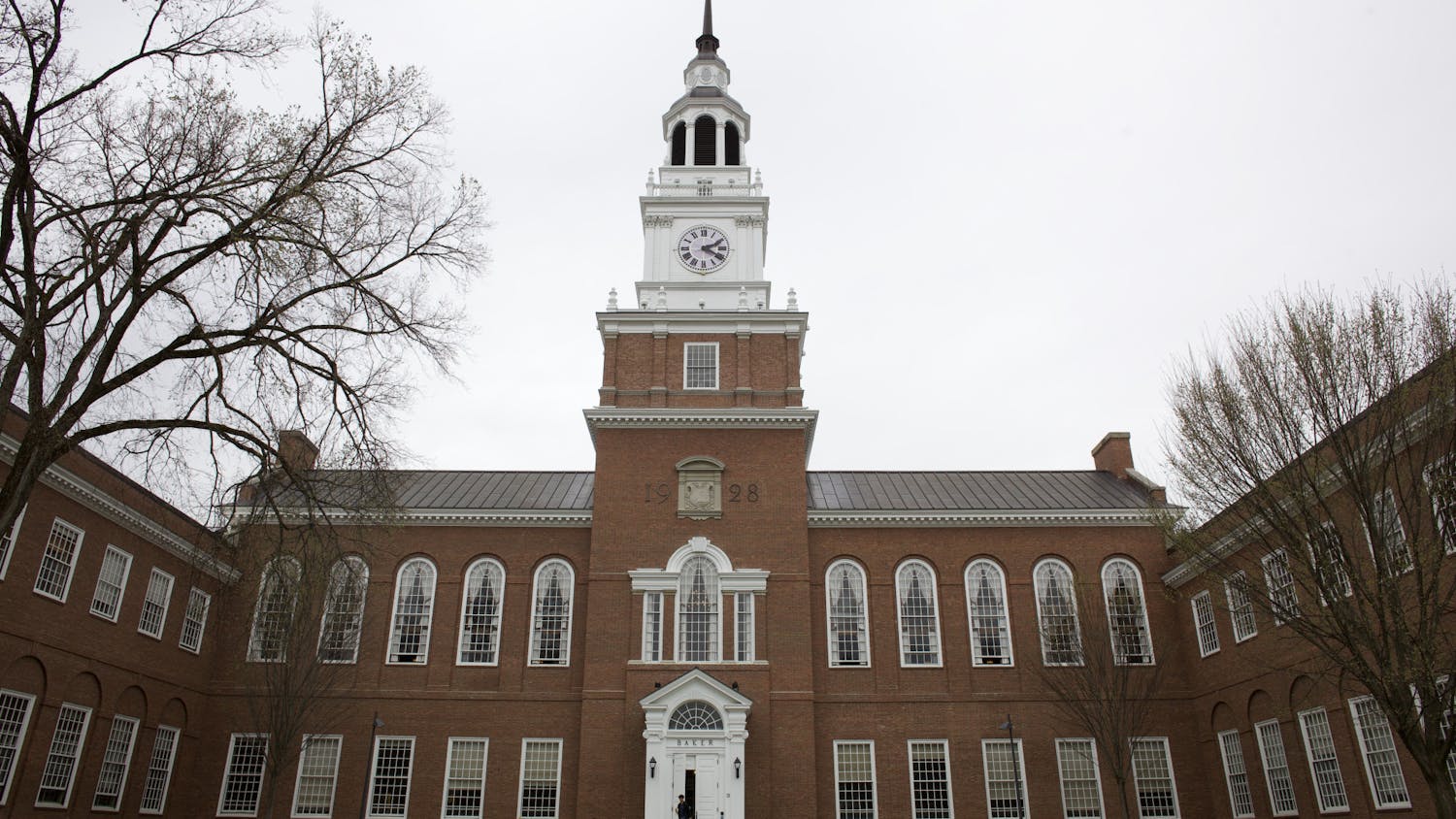This article was featured in the 2017 Freshman Issue.
While Dartmouth is home to both traditions and buildings that harken back to the College’s nearly 250-year history, one of the most referenced parts of the College’s academic and social structure is relatively young. The residential house system, which was announced by College President Phil Hanlon as a cornerstone of the Moving Dartmouth Forward initiative in 2015, will celebrate its second year this coming fall. Marked by both relative success as well as criticism in its first year, leadership structures consisting of students, graduate students and professors have materialized and contributed towards a variety of programming.
The residential house system places all Dartmouth students into one of six houses: Allen, East Wheelock, North Park, School, South and West. Most students, with the notable exception of students living in Living Learning Communities, affinity houses and Greek houses, live on floors with other students who share the same house. Furthermore, social and academic programming was organized through these houses in an effort to increase house unity.
These houses aimed to “deepen intellectual engagement for everyone on campus” and strengthen “a sense of community across all of our different community groups” from undergraduates to graduate students, faculty and staff, Dean of the College Rebecca Biron said.
With the arrival of the Class of 2020 last fall, the residential house system began to implement programming to increase student participation.
“At the beginning of last year, there was nothing really holding the community together other than the fact that people were living in particular floors or dorms together,” said physics professor Ryan Hickox, who is the house professor for West House.
The house system was a major element of the first-year orientation and many academic and social events were organized by house. Once the fall term began, first-year students had their first academic advising session in groups with other students from the same house, which were orchestrated by their respective house professors. In addition, the house system kick-off barbeque was planned in unison with the Programming Board’s fall concert. Attempting to pave its way into Dartmouth tradition, the first-year sweep during homecoming was also organized based on residential house. All of these events helped increase house unity and participation in the residential house system, Biron noted.
Staff, faculty and students in each house helped orchestrate these events. Each house is co-led by a residential education professional staff member, who lives in one of the house dorms, as well as a house professor, who serves as the “intellectual head of the house,” according to sociology professor Janice McCabe, who serves as the house professor for Allen House. Currently, sociology professor Kathryn Lively serves as the house professor for South House, mathematics professor Craig Sutton for School House, mathematics professor Sergi Elizalde for East Wheelock and Native American studies professor Melanie Taylor for North Park. While the LLCs are technically not their own house, professor of Asian and Middle Eastern studies Dennis Washburn serves as the house professor for students living in them. These house professors help organize events, offer guidance to students and foster the unity and growth of their respective house, Hickox said.
In addition to the house professors and residential education professional staff members, each of the houses has four residential fellows, who are graduate students at the College. The fellows help organize activities and often hold office hours within their subject areas.
Undergraduate Advisors, who are also students, serve a crucial role within the house system, as they are often in direct contact with other students. UGAs live on the floor they are responsible for, organizing meetings and events for the floor as well as working with house assistant directors to coordinate house events.
Lastly, the executive board of each house is comprised of elected or volunteer students who help organize programming and events. Given the relatively horizontal leadership structure of the house system, students are easily able to become members of this board or work with the board to implement programming, Lively said.
“The principle that all the houses shared was to create as much student-driven decision making as possible, and different houses did different things to accomplish that,” Biron said.
The physical structure of the house system is not solely in the dormitories which students reside but also the two house centers on campus as well as the residential houses where the house professors live. Allen House and School House share House Center B on the west side of campus which is often referred to as “the Cube,” and North Park House and South House share House Center A on the east side of campus, which students often refer to as “the Onion.” These buildings contain study and social spaces as well as snack bars.
House Center A or “the Onion” was designed under the impression it would be for a temporary community center with a 7-to-12-year lifespan. House Center B or “the Cube” was designed to be a longer-term structure. Biron said that both were designed to be temporary in order to study the best use of the buildings.
The house professors’ residential homes are scattered throughout campus. These houses not only serve as the homes of house professors but are also often used for more intimate house events. House professors often hold dinners and other meals at these houses, which are open to all the members of the professor’s respective house.
These professor houses, the house centers and programming budget utilize only donor-based funding. Biron also noted that naming opportunities for these houses are available for donors who are willing to make long-term significant endowments which can fund these houses in perpetuity.
While each house has unique events, examples of programming include community meals, evening teas, Sunday brunches, events with guest speakers at the college such as Salman Rushdie, study sessions, a broomball tournament on an ice rink on the Green during Winter Carnival, tailgates during homecoming, mentorship programming, trips to places like Six Flags and Boston Red Sox games and other house specific programming. Houses also have begun to produce apparel for each house. Students also were able to create their own programming based on their own backgrounds and interests. For example, a student in South House was able to host a tea event with more than 30 other students that displayed parts of Great Britain’s tea culture. Another South House student was able to host an event where he cooked authentic Chinese food for other members of South House, according to Lively.
“If you have a vision, you could be the one to create the tradition that they are doing in 150 years,” Lively said.
She noted that if students have an idea that fits with the broad goals of the house system, they can pursue it using the resources of the house system. Biron also noted that she thinks more “cross institutional partnerships” may “grow organically” in the future as students connect their house affiliation with their own extracurricular groups such as Greek houses, affinity groups or athletic teams.
For many students, the house system allowed them to pursue career and leadership opportunities on campus. Dania Torres ’20 was able to find a sense of community in Allen House. She noted she and other students are able to present ideas for projects and get to know other house members.
“Community is what characterizes Dartmouth,” Torres said.
She was also able to participate in a mentorship program through Allen House and the College’s Osher Lifelong Learning Institute, which provides educational programs for residents in the Upper Valley. Her mentor Roland Kuchel served as the former U.S. Ambassador to Zambia and Haiti. Through this mentorship program, she was able to learn more about possible career options and internship opportunities.
Another student, Jenna Salvay ’20, noted that the house system allows students to create programming based on their interests and backgrounds. She added that the horizontal leadership structure also creates both flexibility and freedom in regards to programming ideas.
While the house system began to make inroads at the College, it was met with a fair share of criticism from students, faculty and alumni who believed that the money used for the house system could be better utilized elsewhere. Furthermore, some students saw the house system as an attempt at replacing the College’s Greek system.
McCabe said that the house system is intended to be a supplement for “students who haven’t already found their place here.” Biron also emphasized this sentiment and added that leadership in the house system is looking into a joint community service partnership between members of Greek Houses and house community members.
“When [the new housing system] was first brought about and proposed, it was met with a lot of apprehension from the student body because they did not see a direct need and it did not seem to align with a lot of the cultural aspects of Dartmouth, but we see it as another opportunity to form relationships and get closer to our Dartmouth classmates as well as faculty,” student assembly president Ian Sullivan ’18 said.
The house system also faced some unexpected leadership turnover in its first year of implementation. An announcement notifying campus that biology professor Ryan Calsbeek, the original North Park house professor named during the 2015-16 school year, would step down from his position was emailed to students on September 1, 2016. Biron temporarily served in this role until Taylor was named as the current North Park house professor. Later during the spring term, Allen House professor Jane Hill was removed from her position and replaced by McCabe. Hill claims that her firing as house professor was involuntary, and Allen house students expressed disappointment over her removal.
Despite these setbacks, Biron said that housing communities have continued to provide inclusive programming for students. House structures served as study and social spaces, faculty from each house served as mentors and students began to create a sense of house unity, she said.
“An interesting thing at Dartmouth is that some people think traditions need to be 250 years old to be valuable, but traditions can be established very quickly when students value them and find that they produce community,” Biron said.




